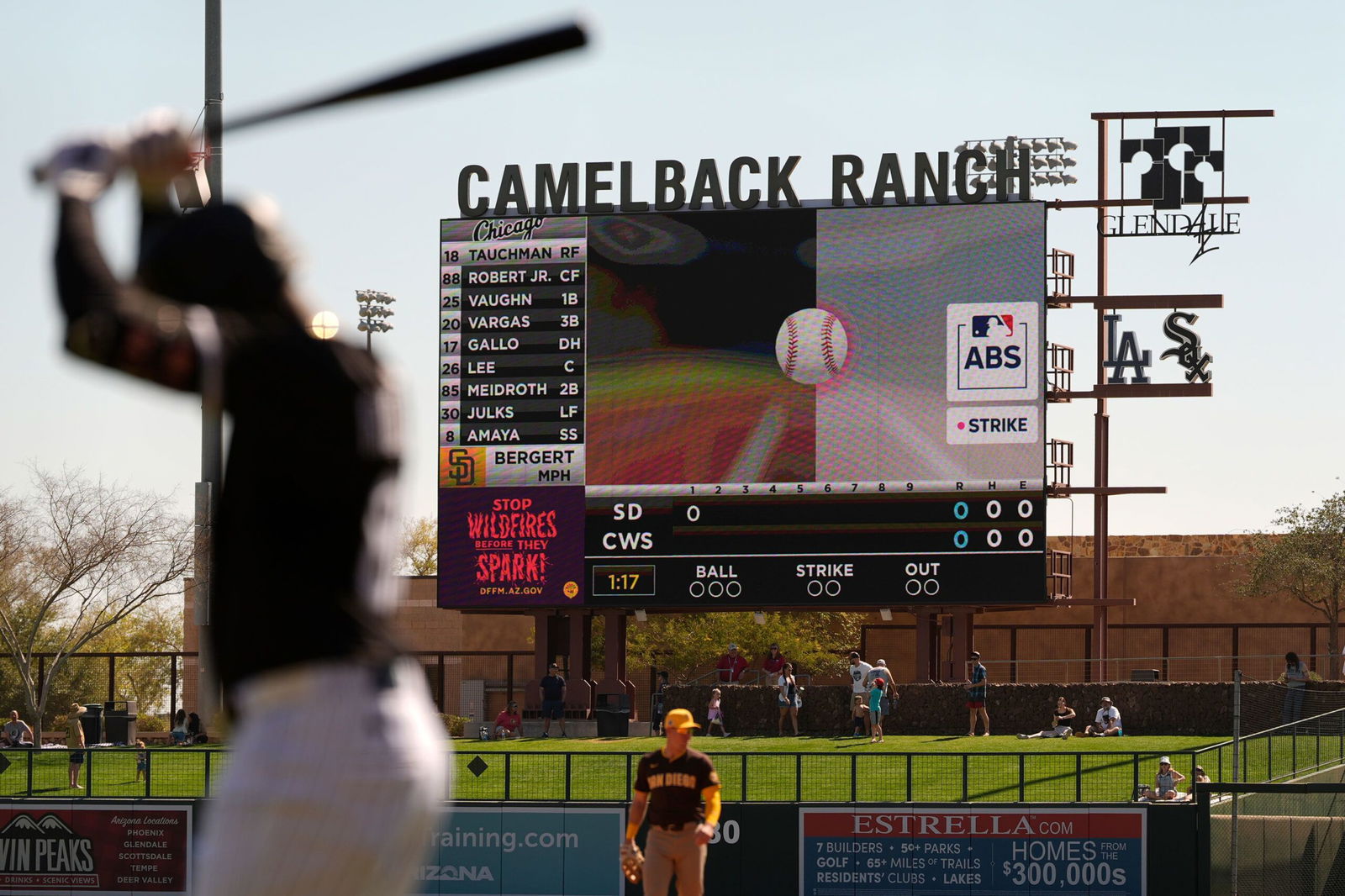MLB is putting automated balls and strikes to the test in the All Star Game. Some pitchers aren’t exactly thrilled

The Automated Ball-Strike System plays on the scoreboard after a pitch call was challenged during the first inning of a spring training baseball game between the Chicago White Sox and the San Diego Padres.
By Kyle Feldscher, CNN
Atlanta (CNN) — The hottest topic in Atlanta ahead Tuesday’s Major League Baseball isn’t a player, a coach or a manager.
It’s not even human.
For the first time, the midsummer classic is going to be using automated technology to allow pitchers, catchers and batters to challenge balls and strikes – a system that’s been in use in the minor leagues and in spring training but had never been put in place before at a major league park.
It’s a technology that has the potential to revolutionize the game, a system that might forever change one of the ficklest parts of an incredibly fickle game: The ever-changing, unpredictable strike zone put in place by all-too-human home plate umpires.
Pitchers are largely unfazed – at least before the game gets going.
“I don’t plan on using them. I’m probably not going to use them in the future. I’m gonna let the catcher do that,” said Tarik Skubal, the Detroit Tigers star who will start the game for the American League. “I have this thing where I think everything’s a strike until the umpire calls it a ball.”
Paul Skenes, the Pittsburgh Pirates fireballer who will start for the National League, felt much the same way.
“Pitchers think that everything’s a strike, then you go back and look at it and it’s two, three balls off,” he said Monday. “So, we should not be the ones that are challenging it. I really do like the human element of the game. I think this is one of those things that you kind of think that umpires are great until they’re not, and so I could kind of care less either way, to be honest.”
According to MLB, the challenge system will have the same rules as were used in spring training: Each team starts the game with two challenges and they keep their challenge if they are deemed correct. Only the pitcher, catcher and hitter can challenge a call and the system is put into place when one of those players taps the top of his cap or helmet twice.
The system was in place during the Futures Game at Truist Park on Saturday between some of the game’s top minor league prospect. When a player would challenge a call, the game would pause, and attention would turn to the stadium’s massive screen beyond right center field.
A virtual simulation of the pitch would be shown along with a strike zone and the technology would rule if the ball fell within or outside the box. Play would then resume after the short break.
It’s unclear exactly how the league will determine the size of those strike zones for each batter, and that’s something Los Angeles Dodgers veteran Clayton Kershaw wants to know.
“I did a few rehab starts with it. I’m OK with it, you know, I think, I mean, it works,” he told reporters on Monday. “I just don’t really understand how they’re doing the box for the hitter, because I think every different TV or national streaming service has their own box. I think I just hope that they figure out, because Aaron Judge and Jose Altuve should have different sized boxes, so … know they’ve obviously thought about that. I haven’t talked to MLB about it, but as long as that gets figured out, I think it’d be fun.”
The phrase used most on Monday when discussing the technology was an iconic one in baseball lore: The “human element.”
It’s one of the things that can make baseball so perfectly imperfect – the ability of umpires to simply get it wrong and make a massive impact on the game. From Jim Joyce ruling a batter safe to ruin Armando Galarraga’s perfect game bid to Don Dekinger’s World Series-changing call in 1985, ruling Kansas City Royals player Jorge Orta was safe at first base even though replays showed he was out by a step. Instead of being the last out of a St. Louis Cardinals World Series championship, the moment became the spark for the Royals to charge back and win the title.
The “human element” is one of baseball’s quirks that give the nation’s pastime its identity. But it’s also something that many fans would rather see cast off into obscurity.
Chris Sale, the Atlanta Braves pitcher and reigning NL Cy Young Award winner, said he still wants it to be part of the game.
“Honestly, for me, I kind of like the human element, right? Like I understand why they want to use ABS. And I don’t think it’s a perfect system yet,” he said. “I kind of like the old feel, the old way of doing it.”
The-CNN-Wire
™ & © 2025 Cable News Network, Inc., a Warner Bros. Discovery Company. All rights reserved.



